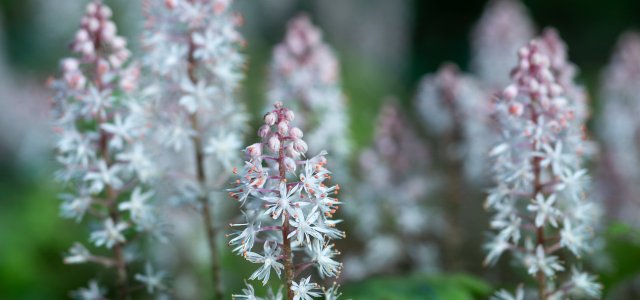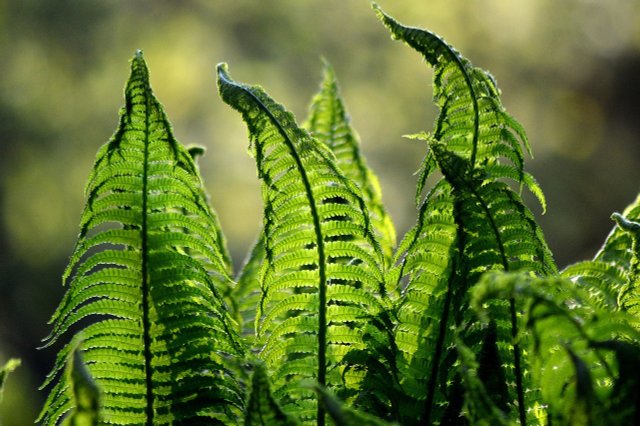
Foam flower is a low-maintenance small perennial. Since it begins to bloom early, it is an important food source for bees, butterflies and other insects. Here you can read how to plant and care for the foam flower.
Foam flower is the name given to a small perennial that originated in North America. The plant prefers moist and nutrient-rich soil, so it grows naturally in mountain forests and along riverbanks. Botanically, it belongs to the saxifrage family.
The perennial is usually hardy and grows very densely, though rather low. Usually it reaches a height of 20 to 30 centimeters. Tiarella, as the perennial is called in Latin, is especially noticeable in the fall because of its intense red color, although it is also wintergreen. The flowers of the plant rise up to 30 centimeters above the leaves. The grape-shaped corollas begin blooming as early as April, making them a welcome food source for bees, butterflies and other insects.
Here’s what to look for to help foam flower thrive in your garden.
Foam flower in your garden

To make the foam flower feel at home in your garden, there are a few things you should consider before you actually plant it:
Location:
- Foam flower prefers a partial shade to shady spot.
- The perennial does not tolerate too much sun.
- A location under large trees or at the edge of a forest is particularly suitable for the foam flower. The small perennial harmonizes particularly well with rhododendrons. It also looks good next to ferns.
Soil:
- The soil should be well-drained and nutrient-rich.
- Loosen the soil thoroughly before planting and remove excess root system.
- Then add plenty of mature compost to the soil. If the soil is very firm, you can additionally loosen it with some sand.
Plant foam flower
Young plants are available in well-stocked garden stores. Here’s how to go about planting perennial foamflower in your garden:
- The best time to plant foamflower is in the spring after frost. Alternatively, you can set the perennial in early fall so it has enough time to root before frost.
- Dig a hole the size of the root ball and place the young plant in it. Then cover the root ball with soil.
- You should leave a space of about 30 to 40 centimeters between each plant.
- You can plant up to eight foam flowers per square meter. But be careful: the plant tends to proliferate and quickly forms a dense carpet.
Care foam flower
If the foam flower is in a suitable location and is provided with sufficient nutrients, it requires little care. However, you should consider the following tips:
- The perennial is sensitive to drought. Therefore, you should water it regularly, especially during long dry periods. But you should also avoid waterlogging.
- To supply the foam flower with nutrients, you can work old leaves into the soil with a rake in spring and fall. In addition, you can work with an organic fertilizer – such as nettle manure – in the spring.
- Remove withered leaves and flowers regularly to stimulate growth.
- Cut back the perennial close to the ground in the fall to prepare it for winter.

